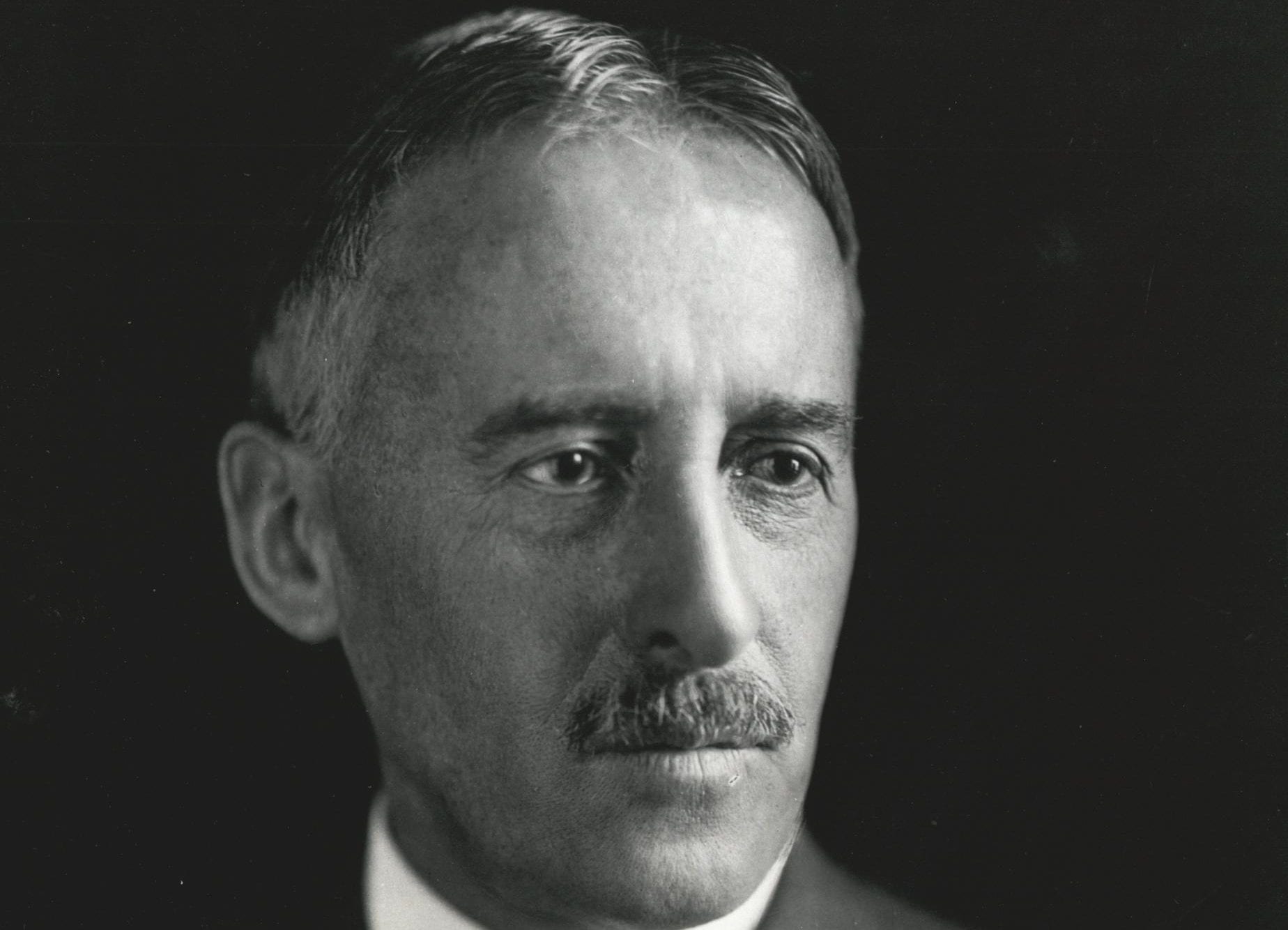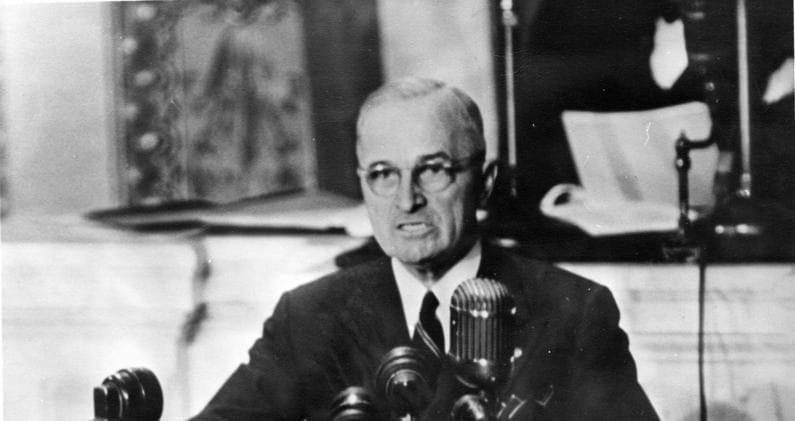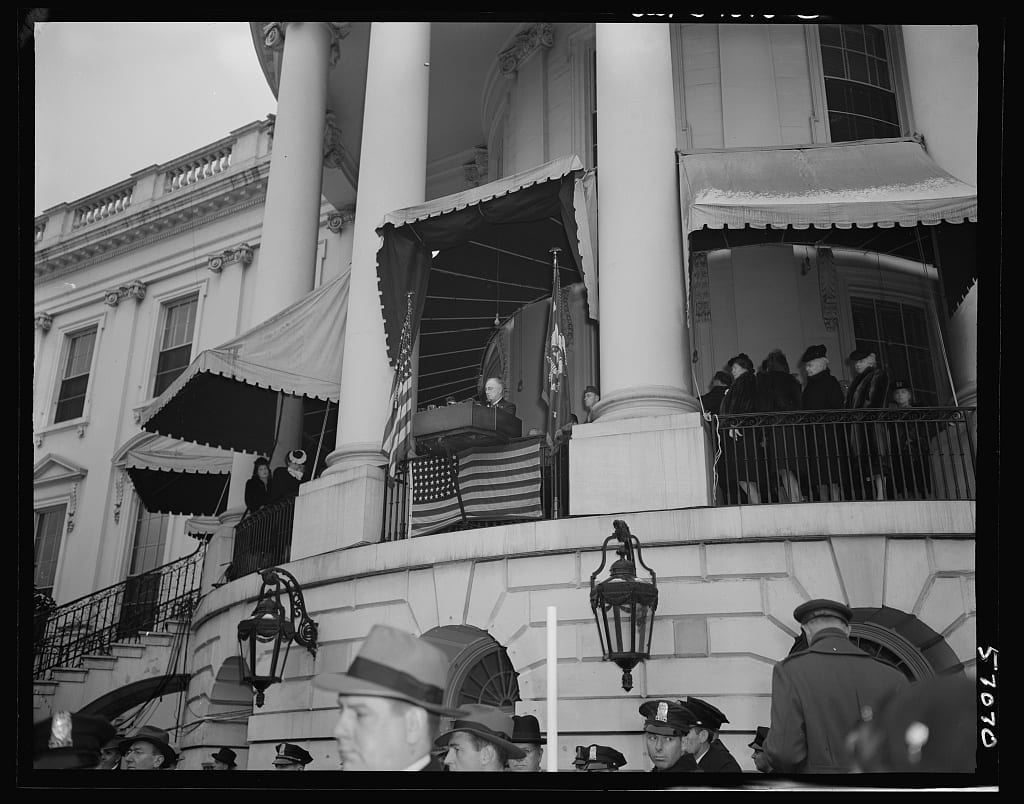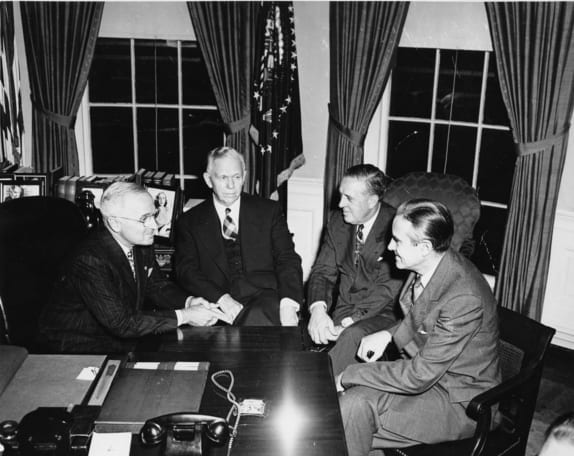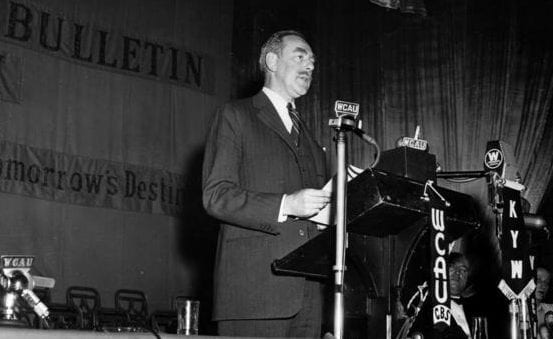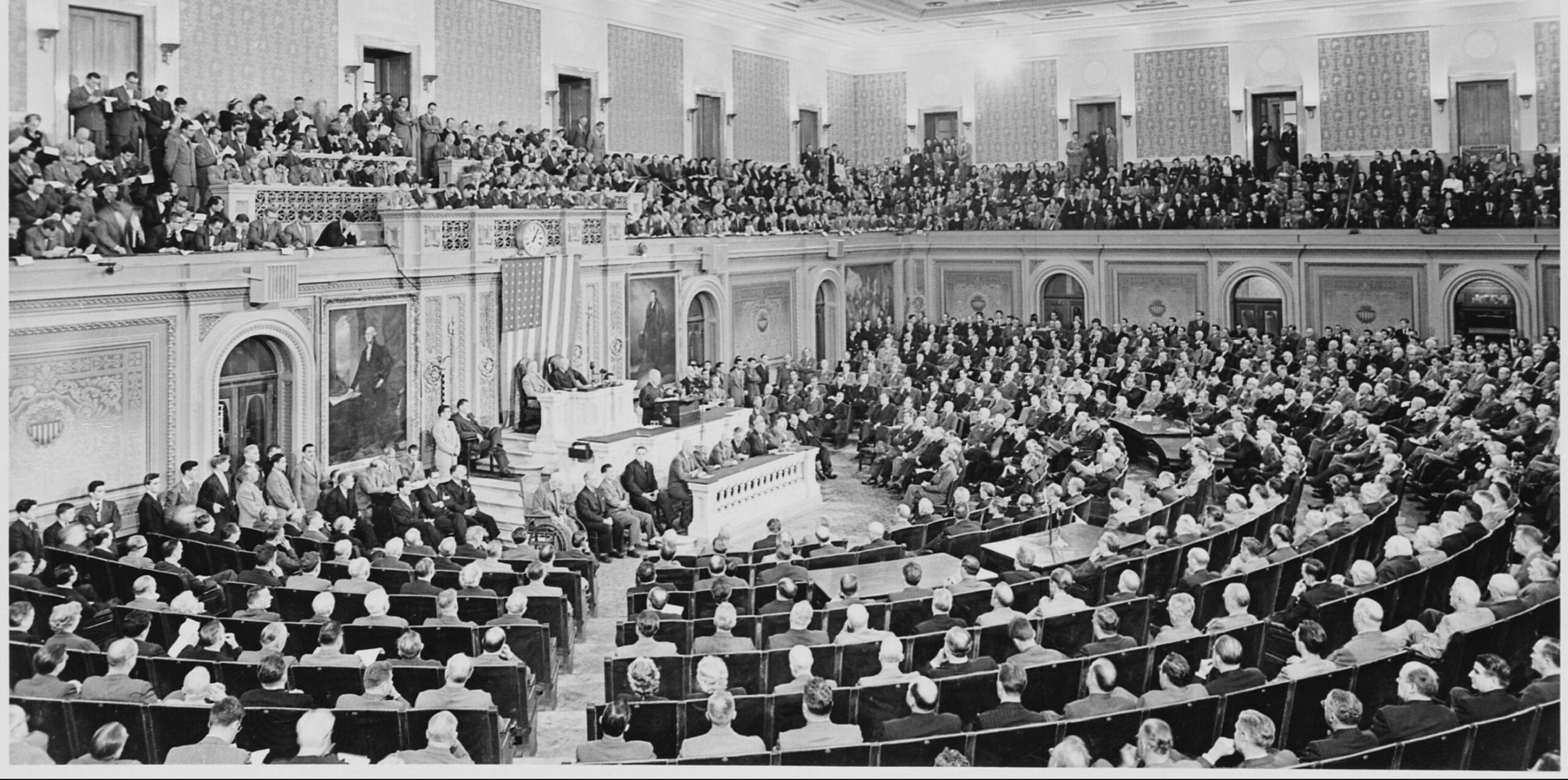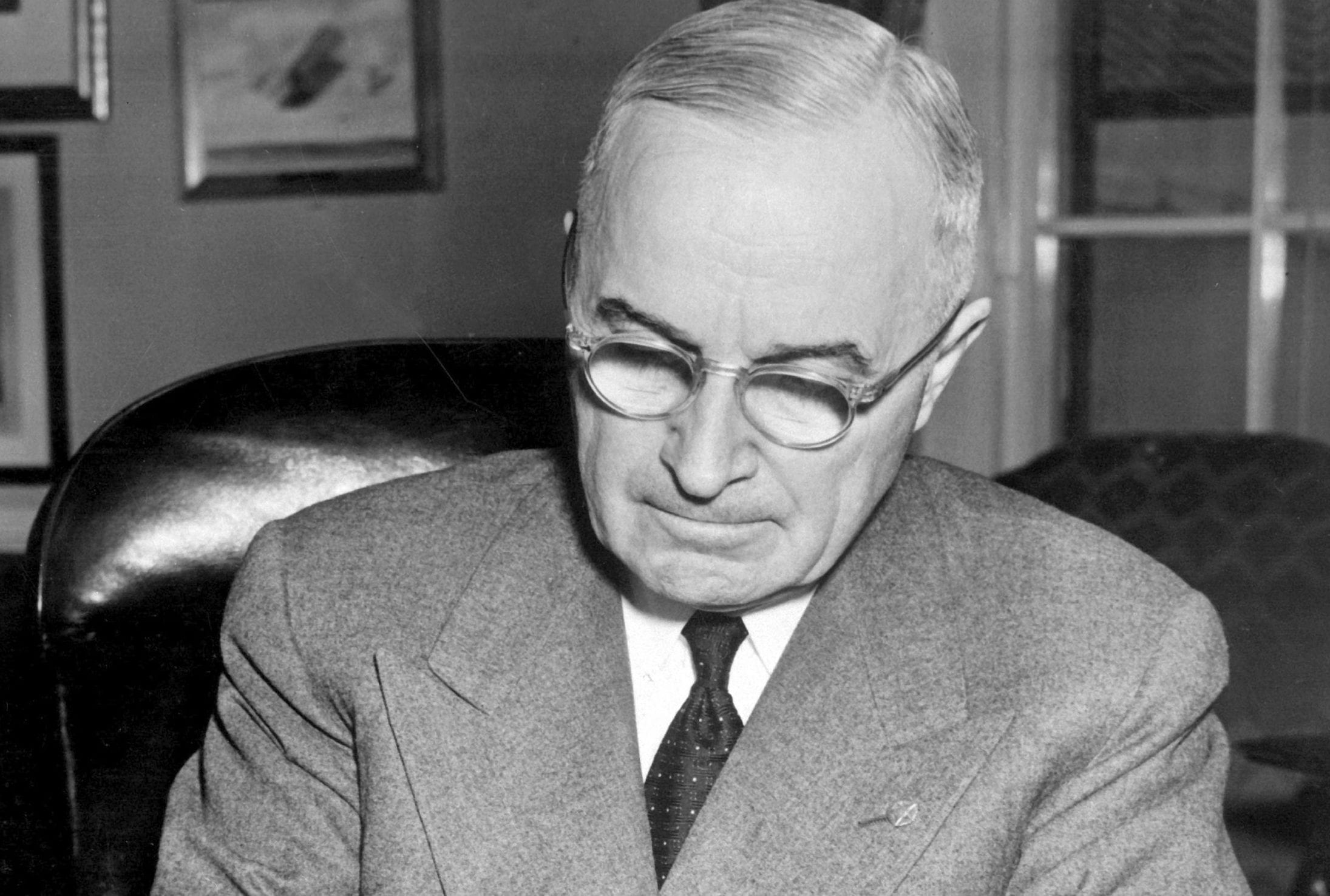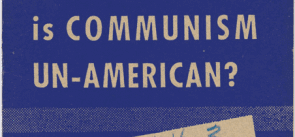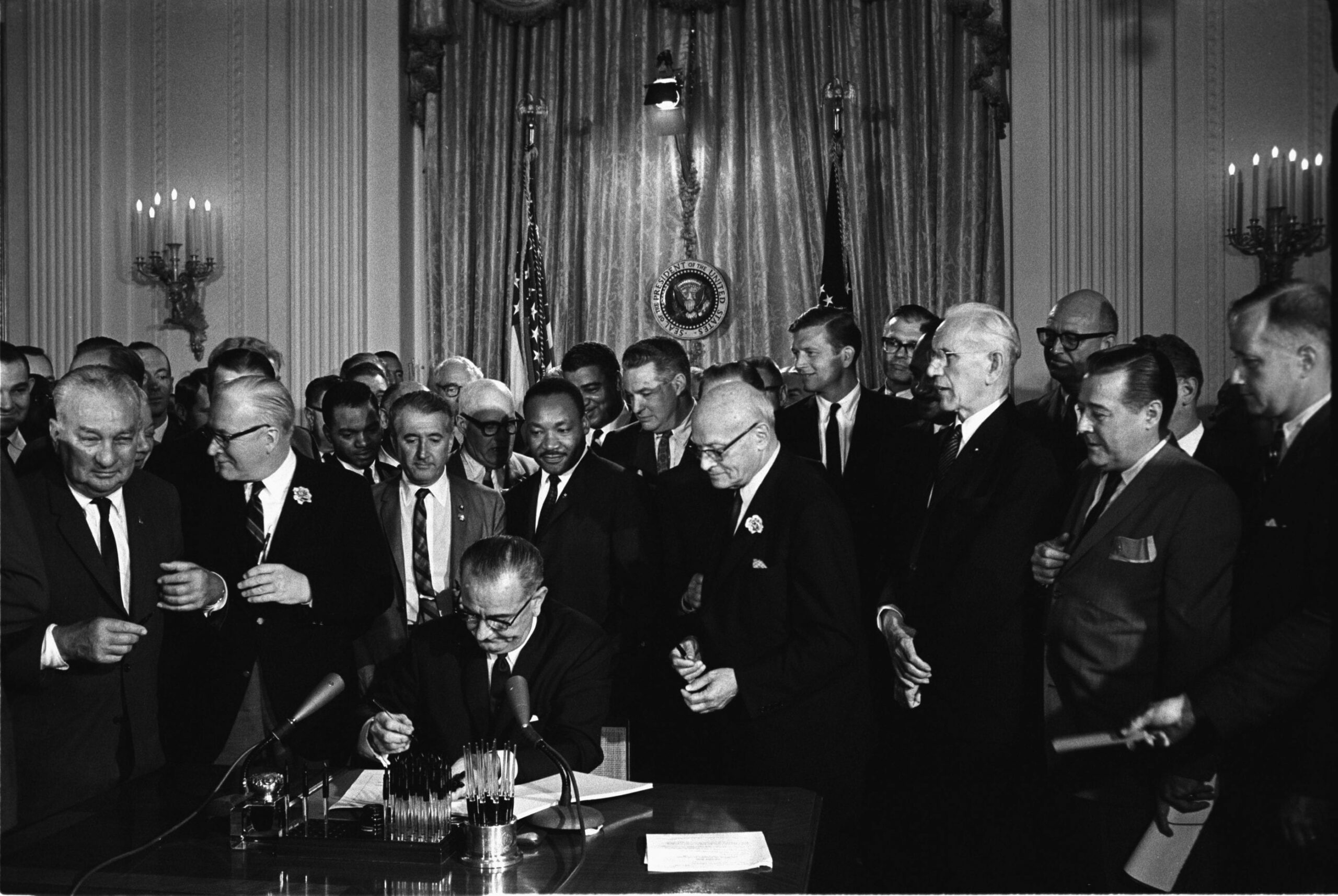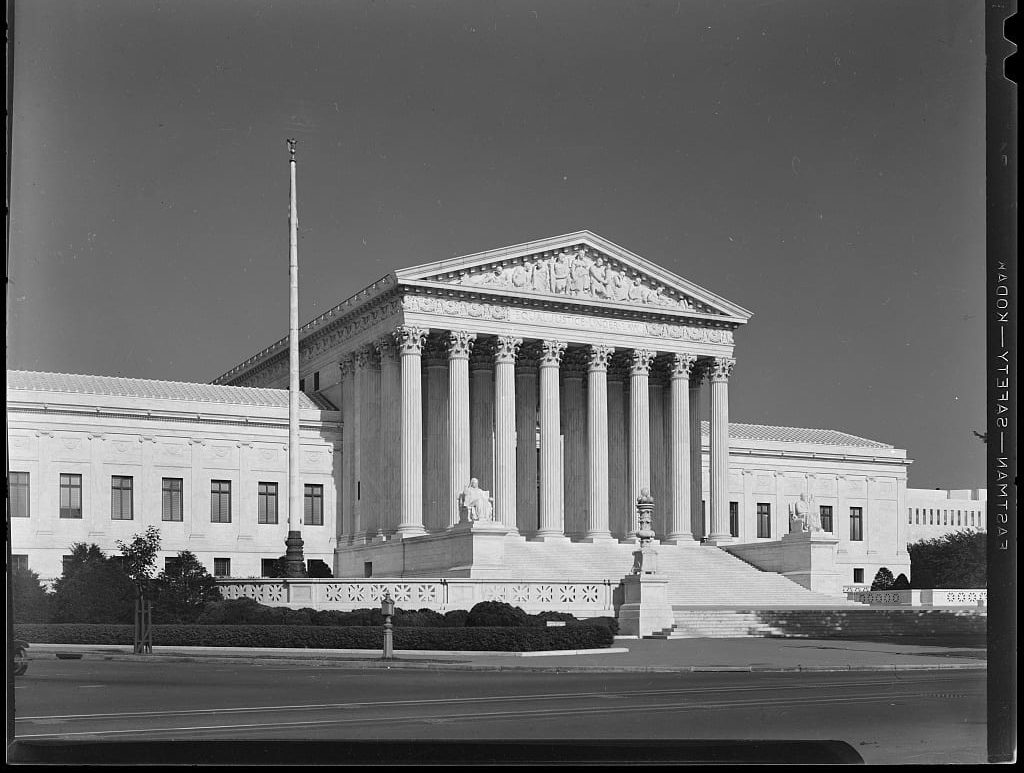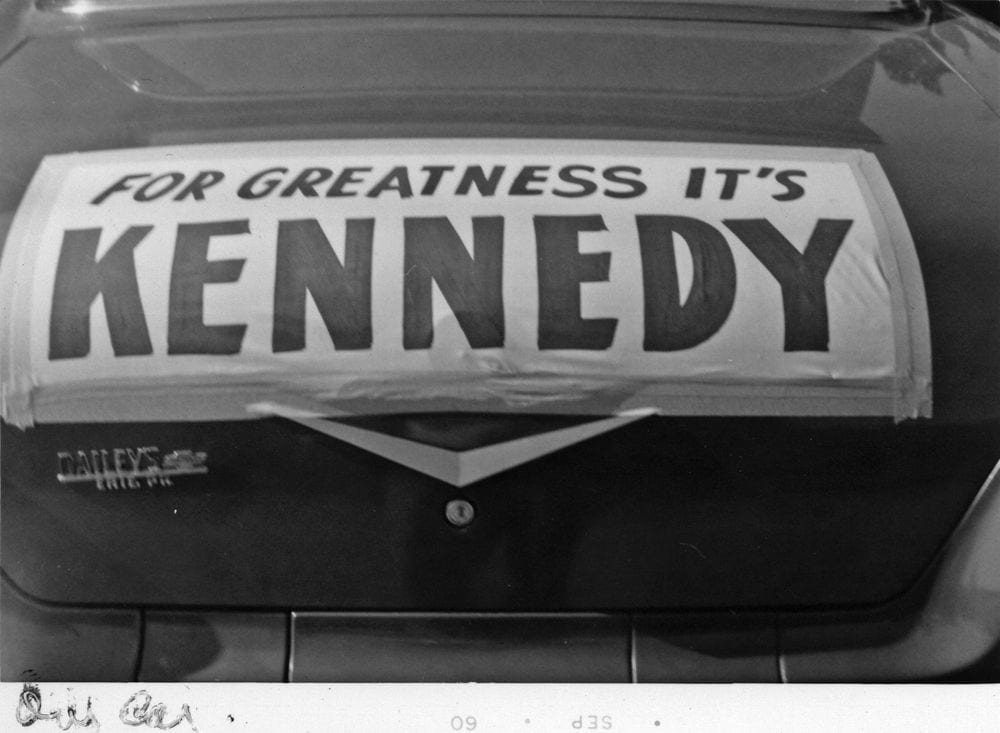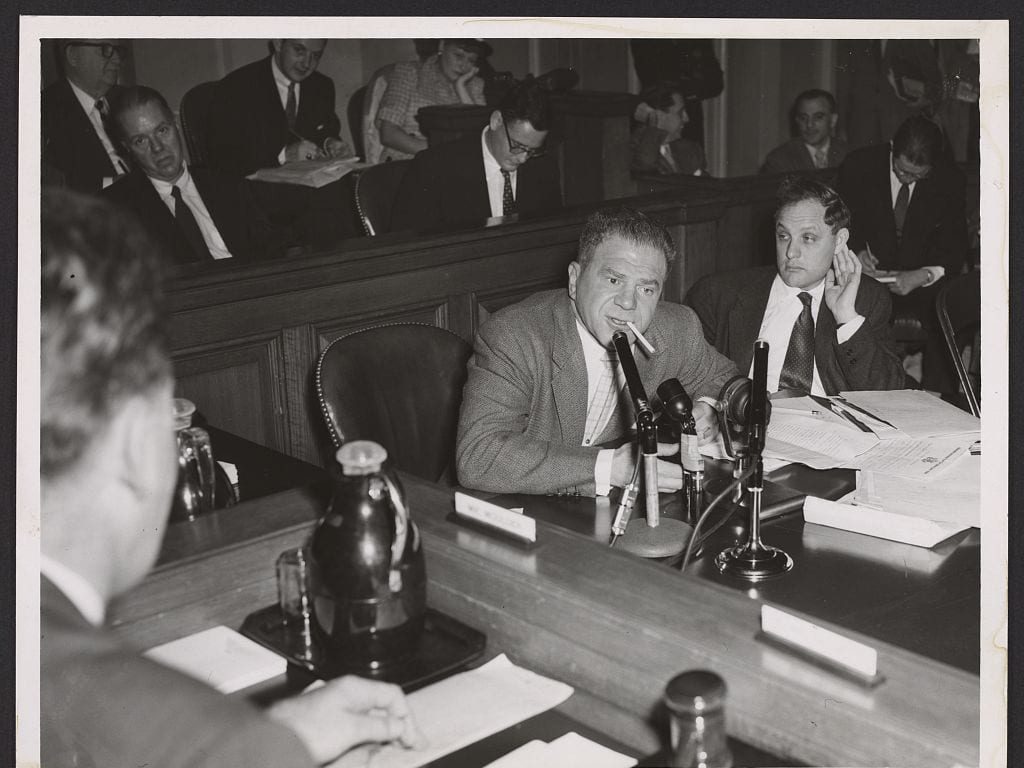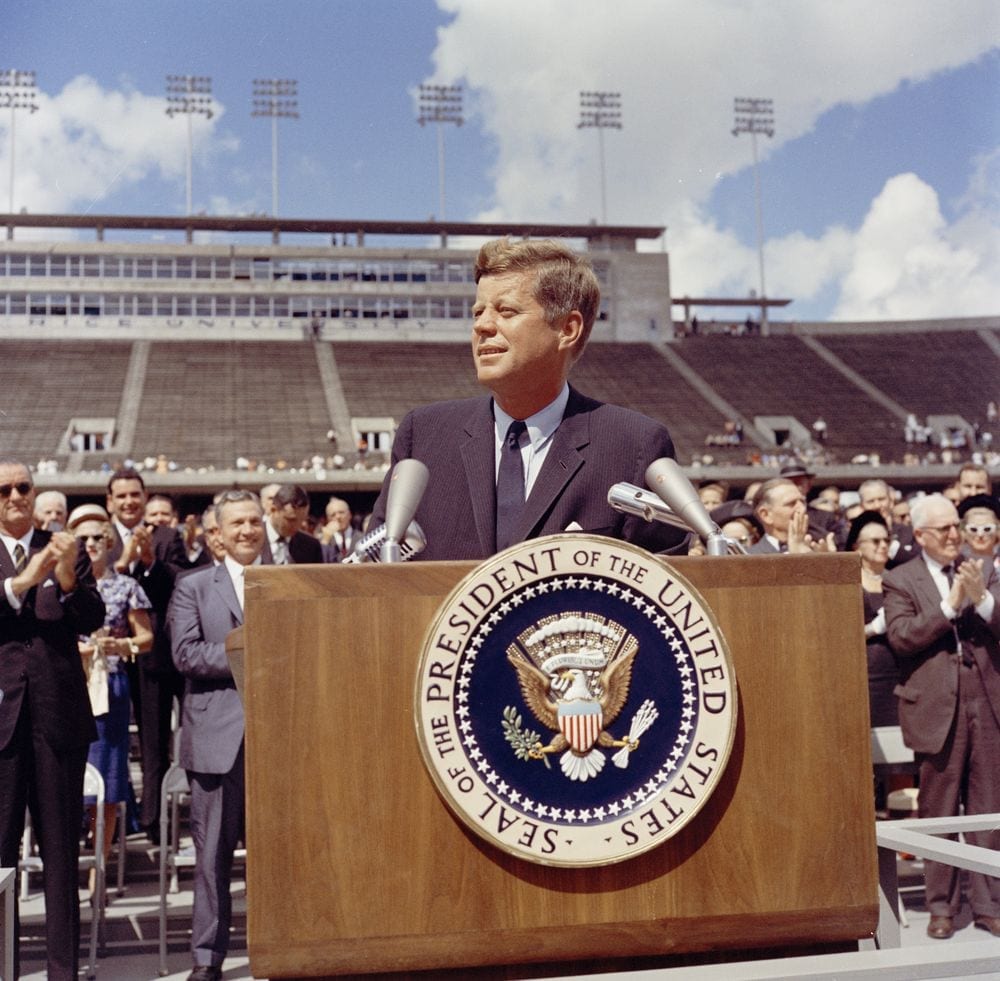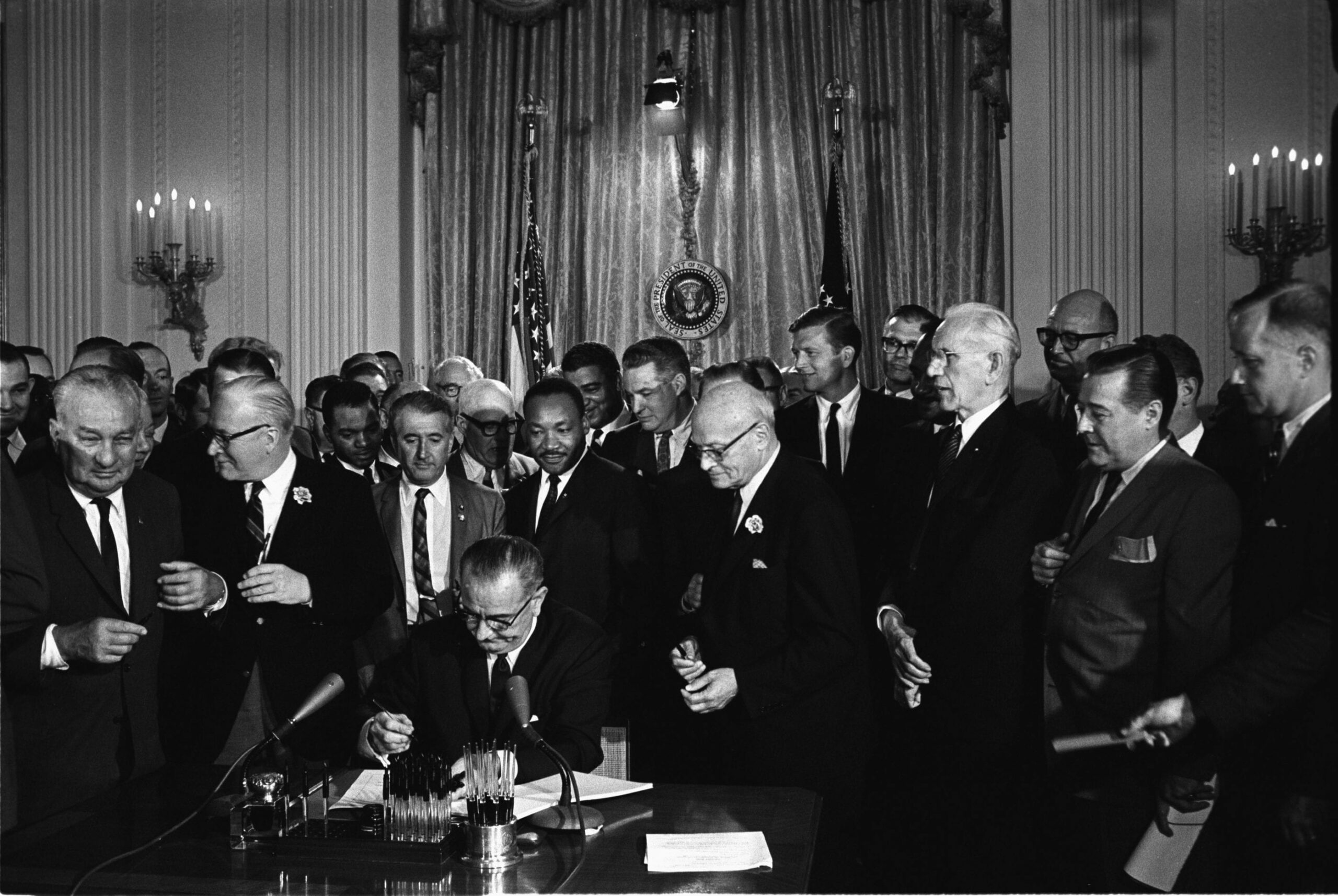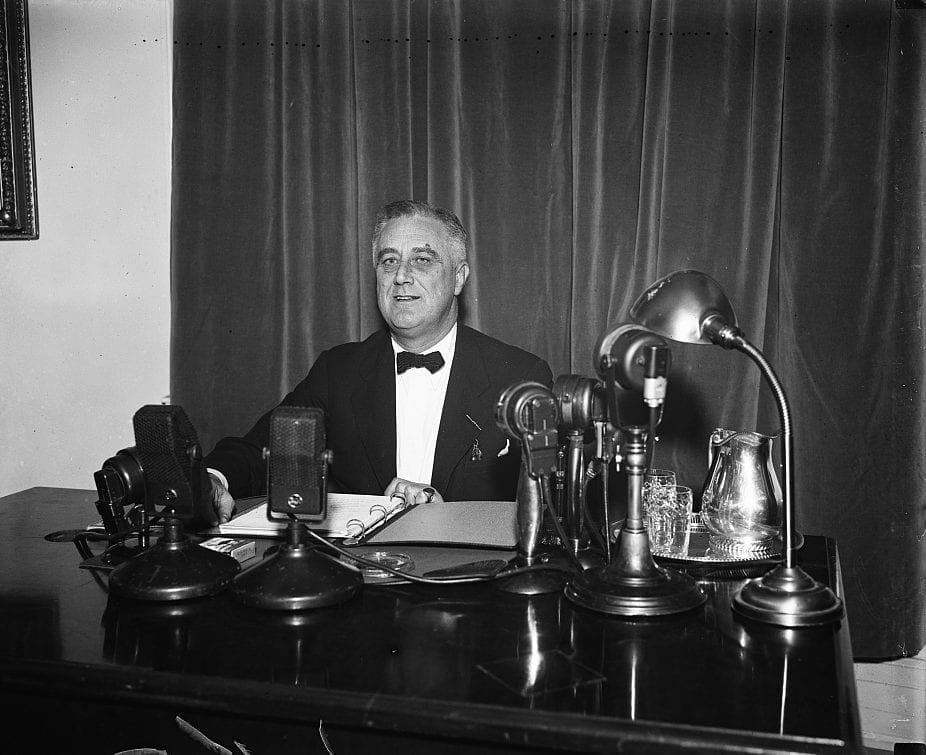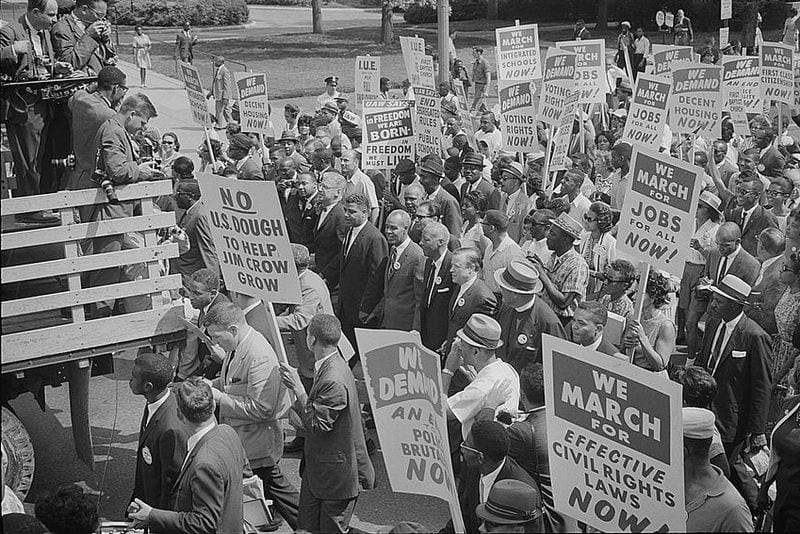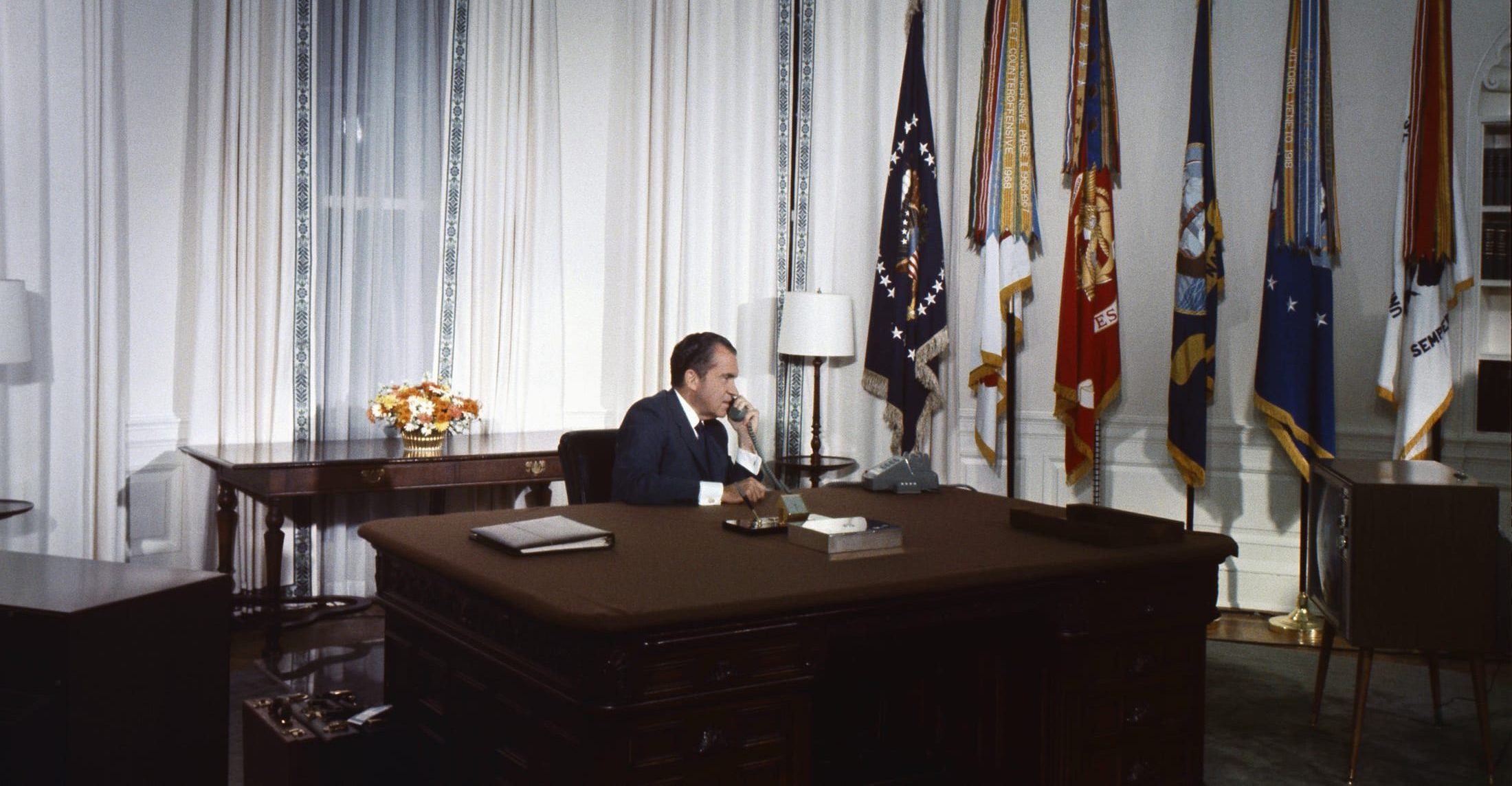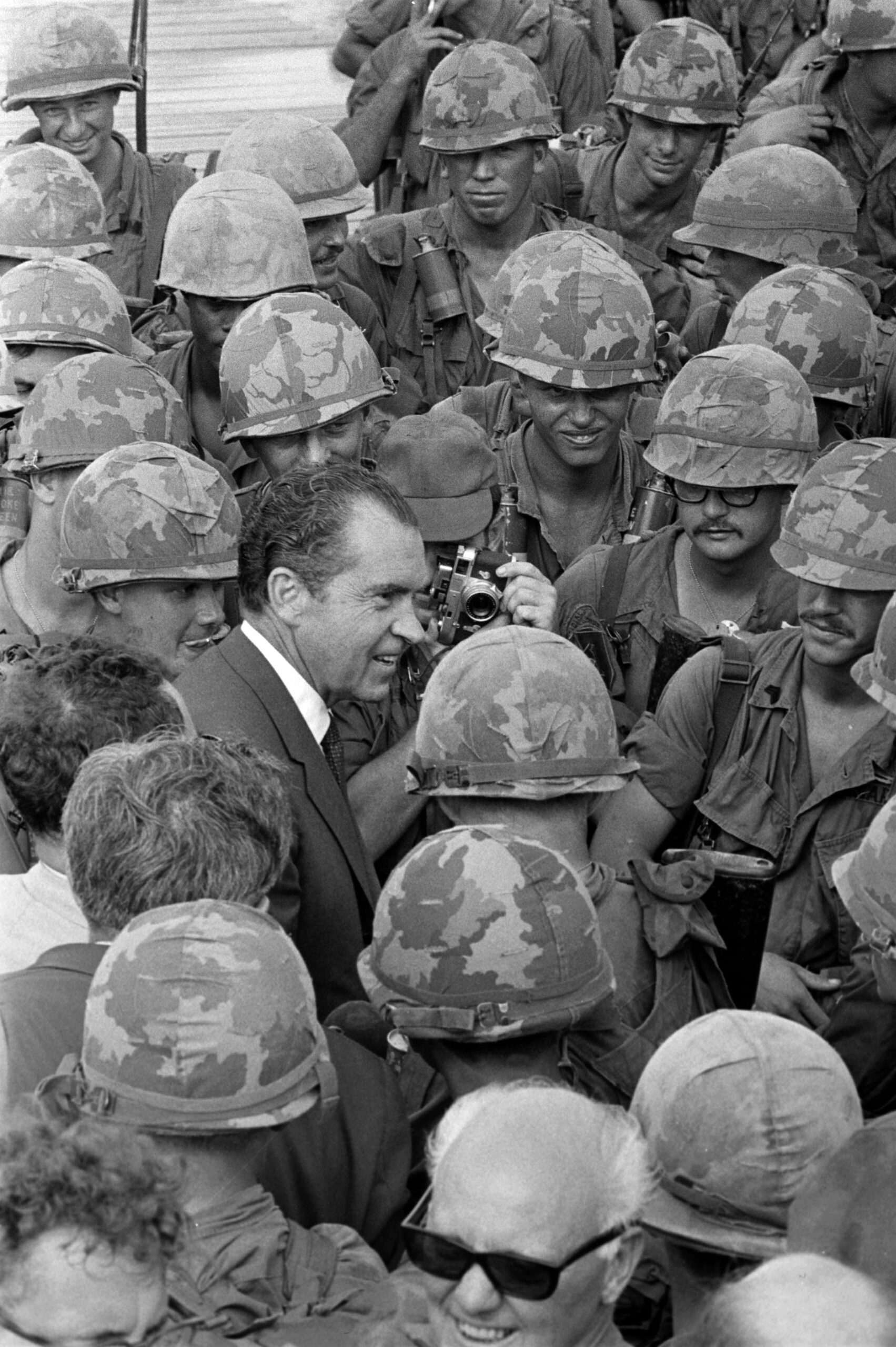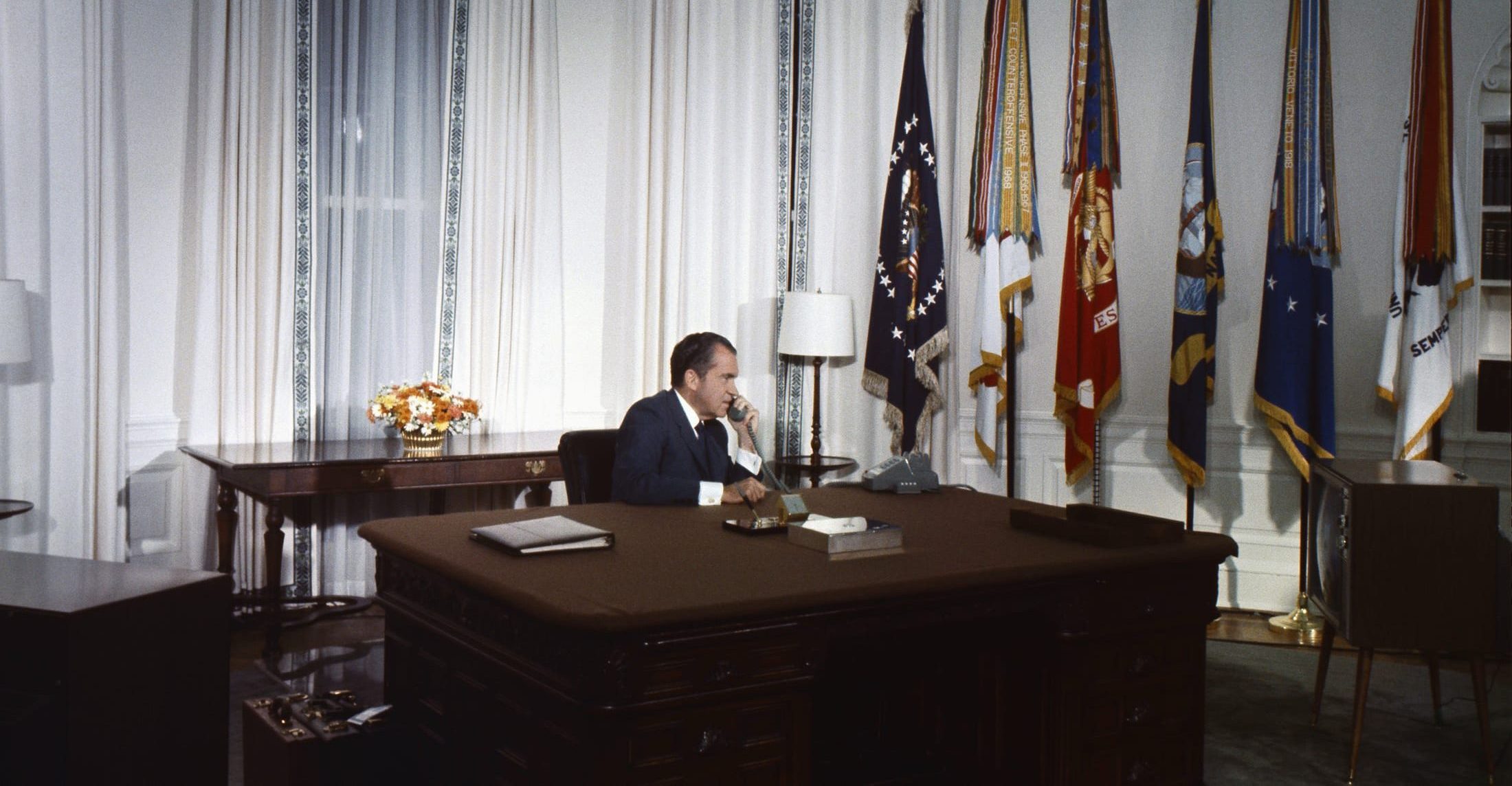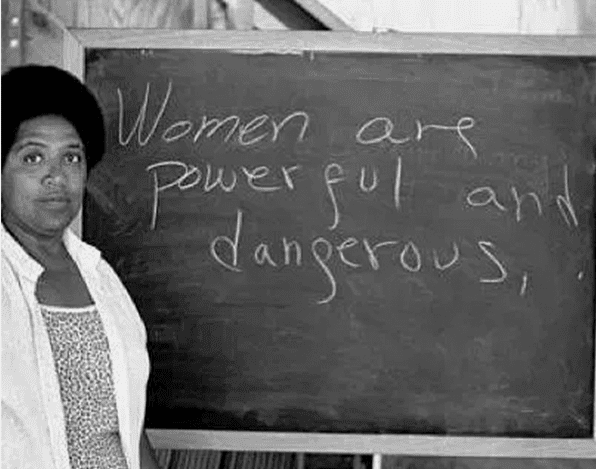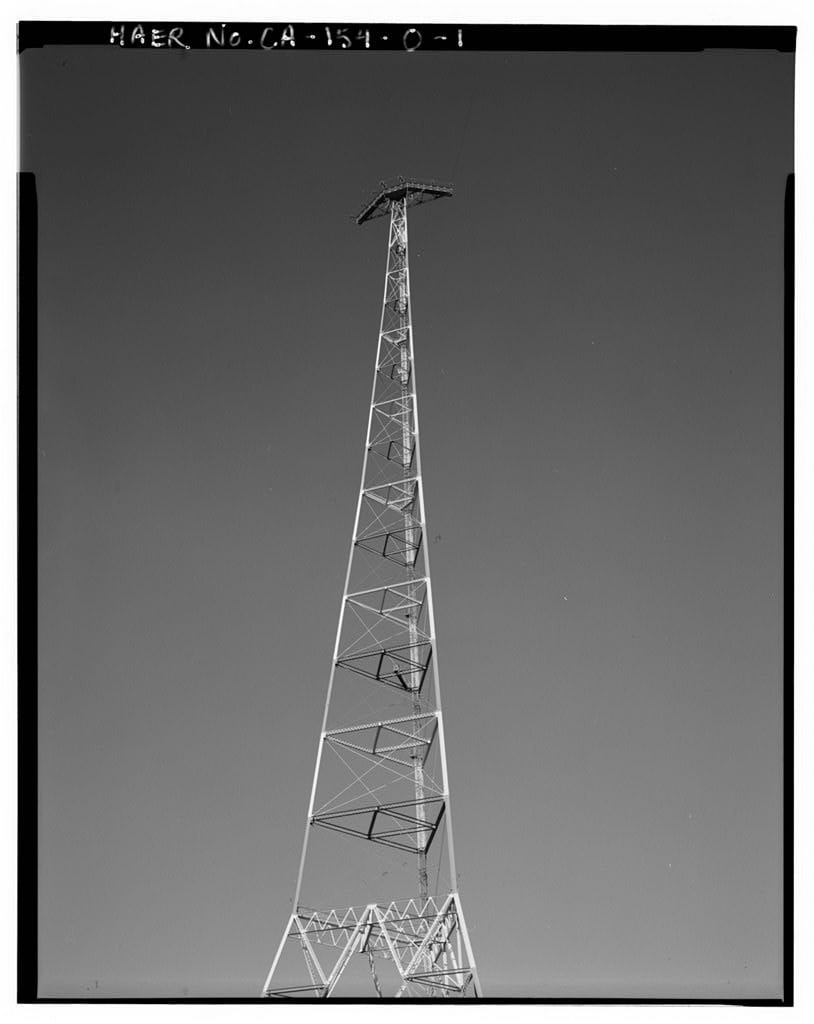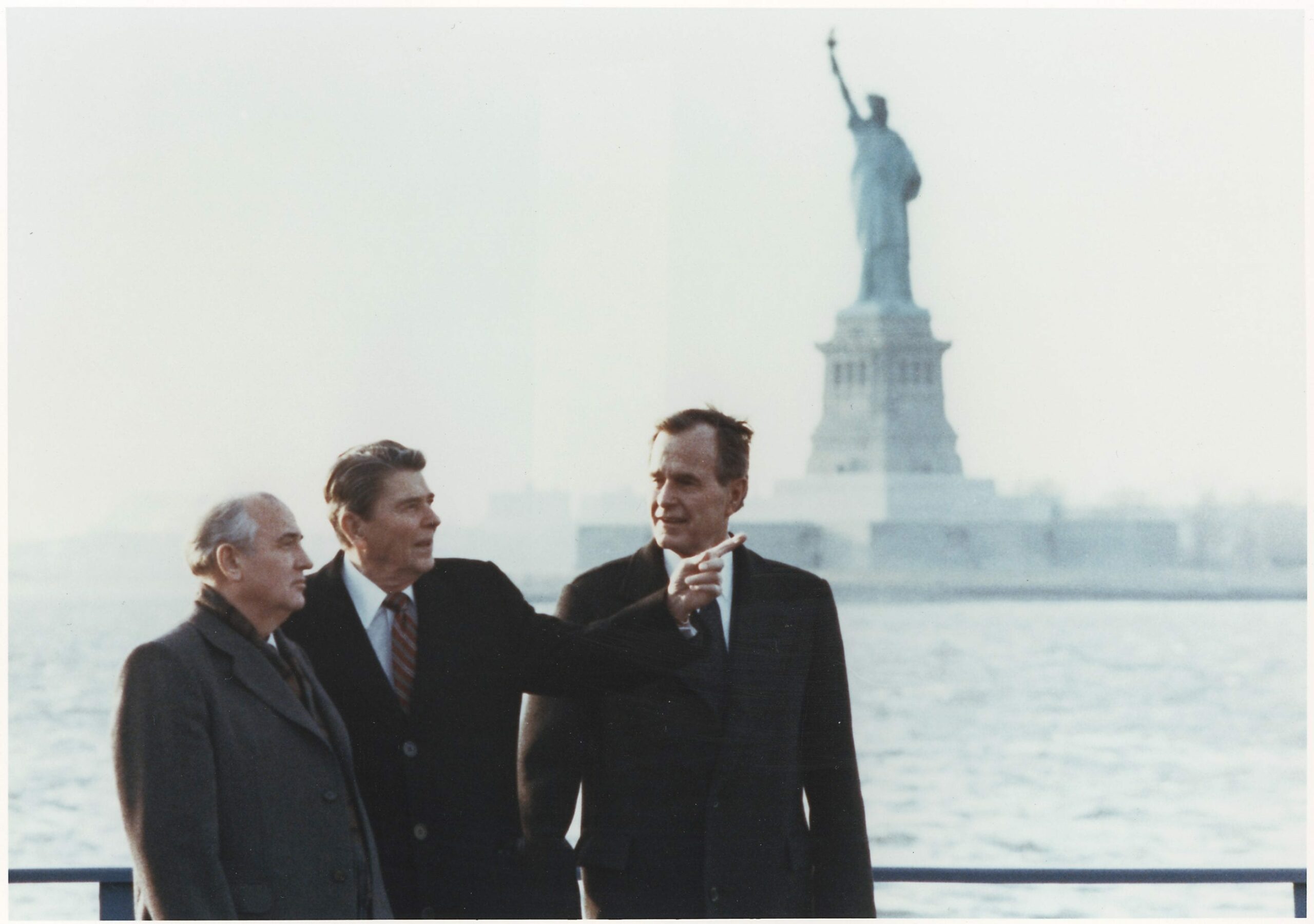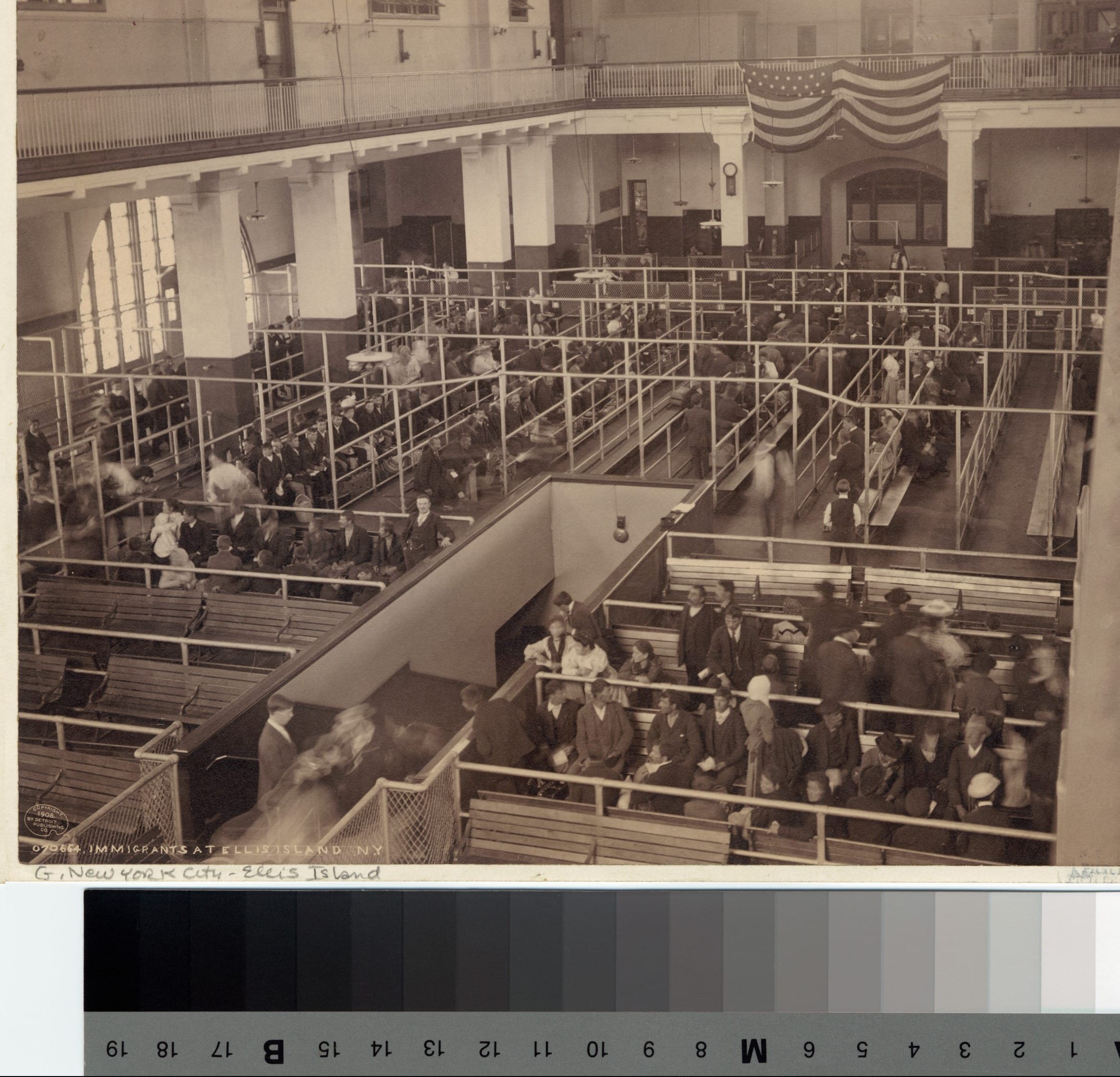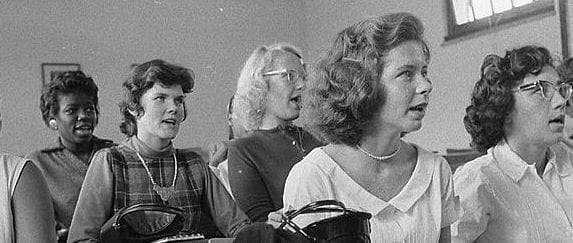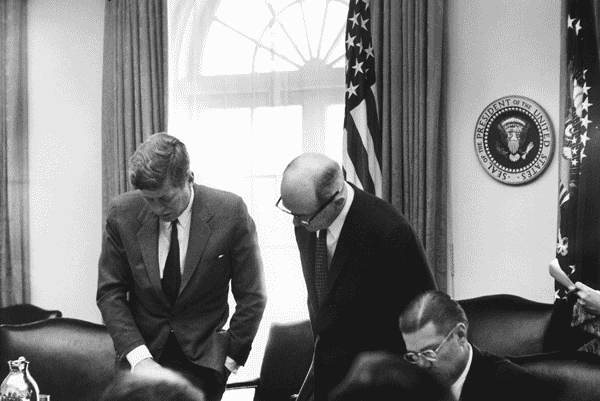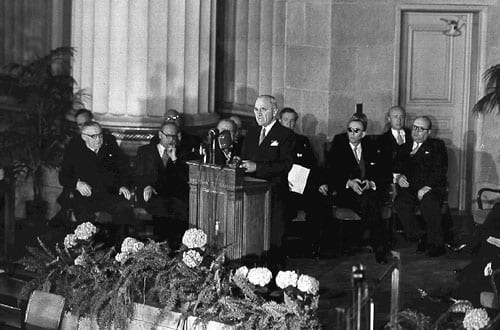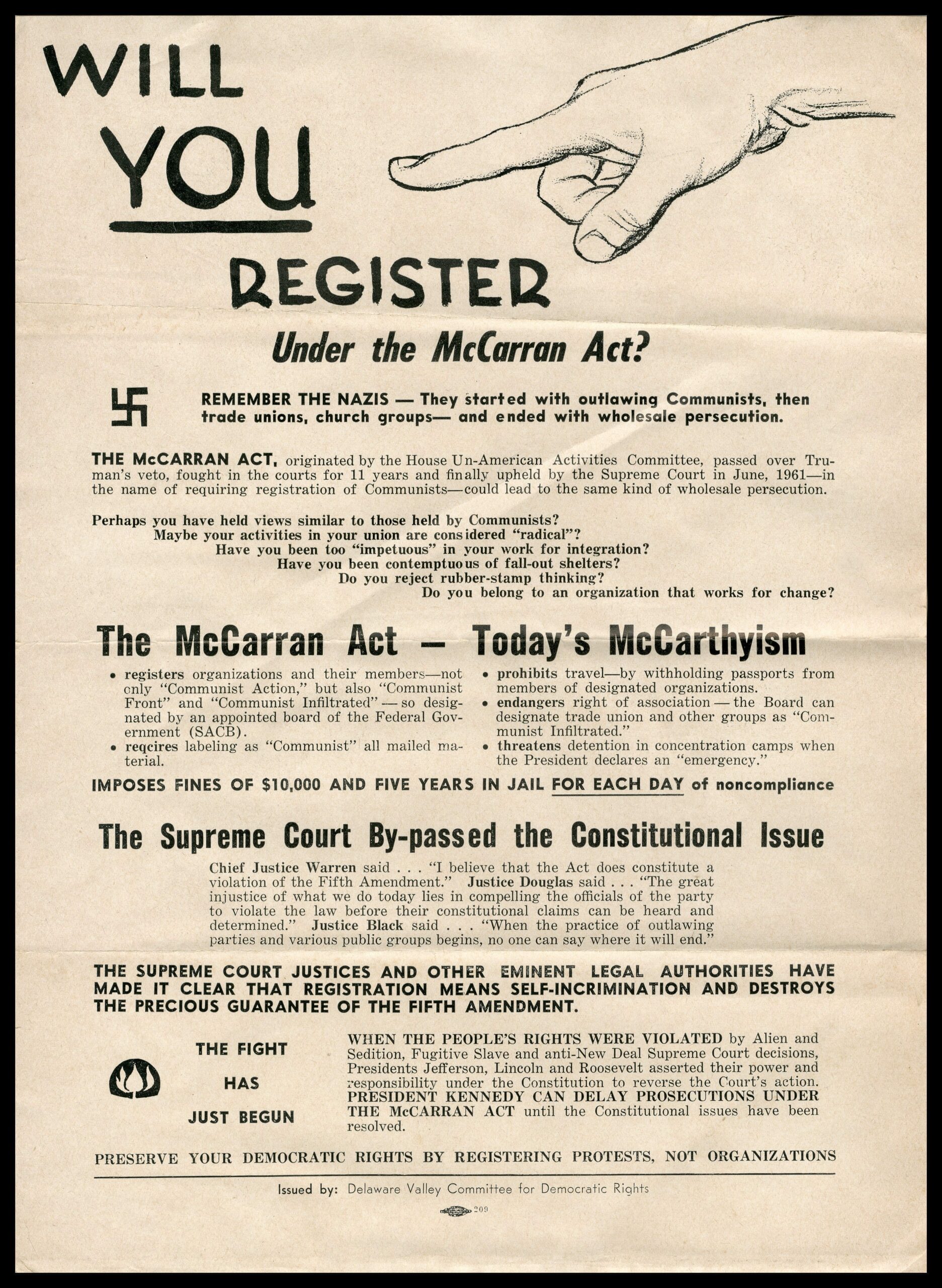
Introduction
The Federal Communications Commission (FCC) was created in 1934 as an independent government agency to regulate the burgeoning radio broadcast industry. Pacifica was a New York radio foundation that broadcast comedian George Carlin’s routine called “Filthy Words”—words “you couldn’t say on the public airwaves.” The monologue was broadcast during the afternoon. After hearing it in the car with his son, a concerned father complained to the FCC that it was inappropriate for minors. On February 21, 1975, the FCC sent a formal letter of complaint to Pacifica. Although it did not revoke Pacifica’s license, the FCC noted that the complaint would remain on file and that sanctions might be imposed in the future. The letter included an opinion that described the monologue as “patently offensive” but not necessarily obscene. The FCC claimed that while it would not ban the monologue, it would require that it be aired at appropriate times in consideration of child audiences. Pacifica sued, claiming that the FCC’s letter and opinion amounted to a restriction of its First Amendment rights.
Deciding in favor of Pacifica, a court of appeals reversed the FCC’s opinion, claiming that it amounted to an overly broad rule that constituted censorship. At issue was the question of whether or not the First Amendment prevents the government from restricting broadcast speech that is indecent but not obscene. Writing for the majority in a 5–4 opinion, Justice John Paul Stevens (1920–2019) ruled that the government may impose such limits on broadcast speech, thereby deciding in favor of the FCC and reversing the court of appeals. FCC v. Pacifica is a significant example of the Supreme Court’s effort to define the First Amendment boundaries of broadcast speech, which, for reasons the majority opinion explains, is given less protection than political speech in public forums. An excerpt from the dissent of Justice William J. Brennan (1906–1997) is also included here.
Source: 438 U.S. 726, https://www.law.cornell.edu/supremecourt/text/438/726.
- JUSTICE STEVENS delivered the opinion of the Court and an opinion in which THE CHIEF JUSTICE[1] and MR. JUSTICE REHNQUIST joined.
This case requires that we decide whether the Federal Communications Commission has any power to regulate a radio broadcast that is indecent but not obscene. . . .
When the issue is narrowed to the facts of this case, the question is whether the First Amendment denies government any power to restrict the public broadcast of indecent language in any circumstances. For if the government has any such power, this was an appropriate occasion for its exercise.
The words of the Carlin monologue are unquestionably “speech” within the meaning of the First Amendment. It is equally clear that the Commission’s objections to the broadcast were based in part on its content. The order must therefore fall if, as Pacifica argues, the First Amendment prohibits all governmental regulation that depends on the content of speech. Our past cases demonstrate, however, that no such absolute rule is mandated by the Constitution.
The classic exposition of the proposition that both the content and the context of speech are critical elements of First Amendment analysis is Mr. Justice Holmes’ statement for the Court in Schenck v. United States: [2]
We admit that, in many places and in ordinary times, the defendants, in saying all that was said in the circular, would have been within their constitutional rights. But the character of every act depends upon the circumstances in which it is done. . . . The most stringent protection of free speech would not protect a man in falsely shouting fire in a theater and causing a panic. It does not even protect a man from an injunction against uttering words that may have all the effect of force. . . . The question in every case is whether the words used are used in such circumstances and are of such a nature as to create a clear and present danger that they will bring about the substantive evils that Congress has a right to prevent.
Other distinctions based on content have been approved in the years since Schenck. The government may forbid speech calculated to provoke a fight. See Chaplinsky v. New Hampshire.[3] It may pay heed to the “‘common sense differences between commercial speech and other varieties” (Bates v. State Bar of Arizona). It may treat libels against private citizens more severely than libels against public officials. See Gertz v. Robert Welch, Inc. Obscenity may be wholly prohibited (Miller v. California).[4] And, only two terms ago, we refused to hold that a “statutory classification is unconstitutional because it is based on the content of communication protected by the First Amendment” (Young v. American Mini Theatres, Inc.).
The question in this case is whether a broadcast of patently offensive words dealing with sex and excretion may be regulated because of its content. Obscene materials have been denied the protection of the First Amendment because their content is so offensive to contemporary moral standards (Roth v. United States). But the fact that society may find speech offensive is not a sufficient reason for suppressing it. Indeed, if it is the speaker’s opinion that gives offense, that consequence is a reason for according it constitutional protection. For it is a central tenet of the First Amendment that the government must remain neutral in the marketplace of ideas. If there were any reason to believe that the Commission’s characterization of the Carlin monologue as offensive could be traced to its political content—or even to the fact that it satirized contemporary attitudes about four-letter words, First Amendment protection might be required. But that is simply not this case. These words offend for the same reasons that obscenity offends. Their place in the hierarchy of First Amendment values was aptly sketched by Mr. Justice Murphy[5] when he said: “[S]uch utterances are no essential part of any exposition of ideas, and are of such slight social value as a step to truth that any benefit that may be derived from them is clearly outweighed by the social interest in order and morality” (Chaplinsky v. New Hampshire).
Although these words ordinarily lack literary, political, or scientific value, they are not entirely outside the protection of the First Amendment. Some uses of even the most offensive words are unquestionably protected. See, e.g., Hess v. Indiana. Indeed, we may assume, arguendo,[6] that this monologue would be protected in other contexts. Nonetheless, the constitutional protection accorded to a communication containing such patently offensive sexual and excretory language need not be the same in every context. It is a characteristic of speech such as this that both its capacity to offend and its “social value,” to use Mr. Justice Murphy’s term, vary with the circumstances. Words that are commonplace in one setting are shocking in another. To paraphrase Mr. Justice Harlan, one occasion’s lyric is another’s vulgarity. Cohen v. California.[7]
In this case, it is undisputed that the content of Pacifica’s broadcast was “vulgar,” “offensive,” and “shocking.” Because content of that character is not entitled to absolute constitutional protection under all circumstances, we must consider its context in order to determine whether the Commission’s action was constitutionally permissible.
We have long recognized that each medium of expression presents special First Amendment problems. And of all forms of communication, it is broadcasting that has received the most limited First Amendment protection. Thus, although other speakers cannot be licensed except under laws that carefully define and narrow official discretion, a broadcaster may be deprived of his license and his forum if the Commission decides that such an action would serve “the public interest, convenience, and necessity.” Similarly, although the First Amendment protects newspaper publishers from being required to print the replies of those whom they criticize (Miami Herald Publishing Co. v. Tornillo), it affords no such protection to broadcasters; on the contrary, they must give free time to the victims of their criticism (Red Lion Broadcasting Co. v. FCC).
The reasons for these distinctions are complex, but two have relevance to the present case. First, the broadcast media have established a uniquely pervasive presence in the lives of all Americans. Patently offensive, indecent material presented over the airwaves confronts the citizen not only in public, but also in the privacy of the home, where the individual’s right to be left alone plainly outweighs the First Amendment rights of an intruder. Because the broadcast audience is constantly tuning in and out, prior warnings cannot completely protect the listener or viewer from unexpected program content. To say that one may avoid further offense by turning off the radio when he hears indecent language is like saying that the remedy for an assault is to run away after the first blow. One may hang up on an indecent phone call, but that option does not give the caller a constitutional immunity or avoid a harm that has already taken place.
Second, broadcasting is uniquely accessible to children, even those too young to read. Although Cohen’s written message might have been incomprehensible to a first grader, Pacifica’s broadcast could have enlarged a child’s vocabulary in an instant. Other forms of offensive expression may be withheld from the young without restricting the expression at its source. Bookstores and motion picture theaters, for example, may be prohibited from making indecent material available to children. We held in Ginsberg v. New York that the government’s interest in the “wellbeing of its youth” and in supporting “parents’ claim to authority in their own household” justified the regulation of otherwise protected expression.
The ease with which children may obtain access to broadcast material, coupled with the concerns recognized in Ginsberg, amply justify special treatment of indecent broadcasting.
It is appropriate, in conclusion, to emphasize the narrowness of our holding. This case does not involve a two-way radio conversation between a cab driver and a dispatcher, or a telecast of an Elizabethan comedy. We have not decided that an occasional expletive in either setting would justify any sanction or, indeed, that this broadcast would justify a criminal prosecution. The Commission’s decision rested entirely on a nuisance rationale under which context is all-important. The concept requires consideration of a host of variables. The time of day was emphasized by the Commission. The content of the program in which the language is used will also affect the composition of the audience, and differences between radio, television, and perhaps closed-circuit transmissions, may also be relevant. As Mr. Justice Sutherland wrote, a “nuisance may be merely a right thing in the wrong place—like a pig in the parlor instead of the barnyard” (Euclid v. Ambler Realty Co.). We simply hold that, when the Commission finds that a pig has entered the parlor, the exercise of its regulatory power does not depend on proof that the pig is obscene.
The judgment of the Court of Appeals is reversed.
It is so ordered. . . .
JUSTICE BRENNAN, with whom JUSTICE MARSHALL joins, dissenting.
I agree with MR. JUSTICE STEWART that . . . the word “indecent” in 18 U.S.C. § 1464 (1976 ed.) must be construed to prohibit only obscene speech. I would, therefore, normally refrain from expressing my views on any constitutional issues implicated in this case. However, I find the Court’s misapplication of fundamental First Amendment principles so patent, and its attempt to impose its notions of propriety on the whole of the American people so misguided, that I am unable to remain silent. . . .
Both the opinion of my Brother STEVENS and the opinion of my Brother POWELL rely principally on two factors in reaching this conclusion: (1) the capacity of a radio broadcast to intrude into the unwilling listener’s home, and (2) the presence of children in the listening audience. Dispassionate analysis, removed from individual notions as to what is proper and what is not, starkly reveals that these justifications, whether individually or together, simply do not support even the professedly moderate degree of governmental homogenization of radio communications—if, indeed, such homogenization can ever be moderate given the preeminent status of the right of free speech in our constitutional scheme that the Court today permits.
Without question, the privacy interests of an individual in his home are substantial, and deserving of significant protection. In finding these interests sufficient to justify the content regulation of protected speech, however, the Court commits two errors. First, it misconceives the nature of the privacy interests involved where an individual voluntarily chooses to admit radio communications into his home. Second, it ignores the constitutionally protected interests of both those who wish to transmit and those who desire to receive broadcasts that many—including the FCC and this Court—might find offensive.
“The ability of government, consonant with the Constitution, to shut off discourse solely to protect others from hearing it is . . . dependent upon a showing that substantial privacy interests are being invaded in an essentially intolerable manner. Any broader view of this authority would effectively empower a majority to silence dissidents simply as a matter of personal predilections” (Cohen v. California). I am in wholehearted agreement with my Brethren that an individual’s right “to be let alone” when engaged in private activity within the confines of his own home is encompassed within the “substantial privacy interests” to which Mr. Justice Harlan referred in Cohen, and is entitled to the greatest solicitude (Stanley v. Georgia, 1969). However, I believe that an individual’s actions in switching on and listening to communications transmitted over the public airways and directed to the public at large do not implicate fundamental privacy interests, even when engaged in within the home. Instead, because the radio is undeniably a public medium, these actions are more properly viewed as a decision to take part, if only as a listener, in an ongoing public discourse. Although an individual’s decision to allow public radio communications into his home undoubtedly does not abrogate all of his privacy interests, the residual privacy interests he retains vis-a-vis the communication he voluntarily admits into his home are surely no greater than those of the people present in the corridor of the Los Angeles courthouse in Cohen who bore witness to the words “F____ the Draft” emblazoned across Cohen’s jacket. Their privacy interests were held insufficient to justify punishing Cohen for his offensive communication. . . .
The Court’s balance, of necessity, fails to accord proper weight to the interests of listeners who wish to hear broadcasts the FCC deems offensive. It permits majoritarian tastes completely to preclude a protected message from entering the homes of a receptive, unoffended minority. No decision of this Court supports such a result. Where the individuals constituting the offended majority may freely choose to reject the material being offered, we have never found their privacy interests of such moment to warrant the suppression of speech on privacy grounds. . . .
Because the Carlin monologue is obviously not an erotic appeal to the prurient interests of children, the Court, for the first time, allows the government to prevent minors from gaining access to materials that are not obscene, and are therefore protected, as to them. It thus ignores our recent admonition that “[s]peech that is neither obscene as to youths nor subject to some other legitimate proscription cannot be suppressed solely to protect the young from ideas or images that a legislative body thinks unsuitable for them.” . . .
In concluding that the presence of children in the listening audience provides an adequate basis for the FCC to impose sanctions for Pacifica’s broadcast of the Carlin monologue, the opinions of my Brother POWELL and my Brother STEVENS both stress the time-honored right of a parent to raise his child as he sees fit—a right this Court has consistently been vigilant to protect. See Wisconsin v. Yoder (1972), Pierce v. Society of Sisters (1925). Yet this principle supports a result directly contrary to that reached by the Court. Yoder and Pierce hold that parents, not the government, have the right to make certain decisions regarding the upbringing of their children. As surprising as it may be to individual members of this Court, some parents may actually find Mr. Carlin’s unabashed attitude towards the seven “dirty words” healthy and deem it desirable to expose their children to the manner in which Mr. Carlin defuses the taboo surrounding the words. Such parents may constitute a minority of the American public, but the absence of great numbers willing to exercise the right to raise their children in this fashion does not alter the right’s nature or its existence. Only the Court’s regrettable decision does that.
As demonstrated above, neither of the factors relied on by both the opinion of my Brother POWELL and the opinion of my Brother STEVENS—the intrusive nature of radio and the presence of children in the listening audience—can, when taken on its own terms, support the FCC’s disapproval of the Carlin monologue. These two asserted justifications are further plagued by a common failing: the lack of principled limits on their use as a basis for FCC censorship. No such limits come readily to mind, and neither of the opinions constituting the Court serves to clarify the extent to which the FCC may assert the privacy and “children in the audience” rationales as justification for expunging from the airways protected communications the Commission finds offensive. Taken to their logical extreme, these rationales would support the cleansing of public radio of any “four-letter words” whatsoever, regardless of their context. The rationales could justify the banning from radio of a myriad of literary works, novels, poems, and plays by the likes of Shakespeare, Joyce, Hemingway, Ben Jonson, Henry Fielding, Robert Burns, and Chaucer; they could support the suppression of a good deal of political speech, such as the Nixon tapes; and they could even provide the basis for imposing sanctions for the broadcast of certain portions of the Bible. . . .
It is quite evident that I find the Court’s attempt to unstitch the warp and woof of First Amendment law in an effort to reshape its fabric to cover the patently wrong result the Court reaches in this case dangerous, as well as lamentable. Yet there runs throughout the opinions of my Brothers POWELL and STEVENS another vein I find equally disturbing: a depressing inability to appreciate that, in our land of cultural pluralism, there are many who think, act, and talk differently from the members of this Court, and who do not share their fragile sensibilities. It is only an acute ethnocentric myopia that enables the Court to approve the censorship of communications solely because of the words they contain. . . .
Statement on the Electoral College
June 27, 1979
Conversation-based seminars for collegial PD, one-day and multi-day seminars, graduate credit seminars (MA degree), online and in-person.

